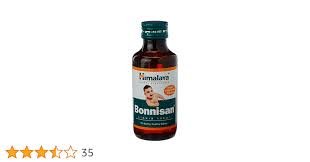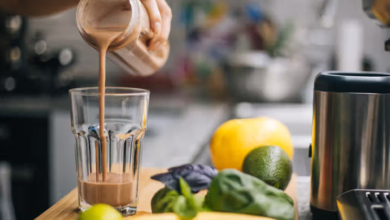Rethinking Everyday Nutrition: Practical Dairy Alternatives for the Urban Household

Across many of Asia’s most vibrant and compact cities, daily routines are dictated by speed, efficiency, and convenience. Families juggle work, school, and personal responsibilities in environments where space is limited, time is precious, and health is a rising concern. Among the evolving food choices supporting this lifestyle, powdered dairy has emerged as a top choice for modern households.
In recent years, consumer habits in urban centers have seen a noticeable shift toward practical nutrition. This is particularly true in Hong Kong, where busy professionals, health-focused parents, and seniors are seeking smart, long-lasting alternatives to perishable goods. One of the standout products driving this transformation is milk powder. When people search for reliable, space-saving dairy options, the phrase milk powder hong kong is now a leading query—reflecting both demand and trust in this versatile solution.
Why Powdered Dairy is Making a Comeback
Though powdered milk has long existed in the background of grocery shelves, its role in urban nutrition is expanding. No longer just a backup item for emergencies, milk powder now serves as a staple for many households. It combines long shelf life with nutritional value and a level of flexibility that fits neatly into the fast-paced routines of Hong Kong residents.
Here are a few reasons behind its growing popularity:
1. Compact and Efficient Storage
One of the biggest advantages of milk powder is its minimal space requirements. Unlike fresh milk, which needs constant refrigeration and occupies significant room in a fridge, powdered versions can be kept at room temperature. This is particularly beneficial in Hong Kong, where apartment kitchens are notoriously small and families seek to maximize every inch.
2. Cost and Quantity Control
Many households are turning to powdered milk for its budget-friendly appeal. A single container can yield multiple liters of reconstituted milk, allowing families to portion out exactly what they need. This reduces waste and saves money—two major benefits in an economy where food inflation and import pricing are key concerns.
3. Wide Range of Nutritional Profiles
Depending on the brand and product type, milk powder comes in various formulations designed to serve children, adults, athletes, and seniors. There are products enriched with calcium and vitamin D for bone support, others with protein for muscle recovery, and specialized options like low-fat or lactose-free blends. The search for milk powder hong kong online often involves filters for age, diet, and health goals.
See also: Protecting Homes and Health: The Role of Local Exterminators in Chelmsford
Meeting the Needs of Different Life Stages
One of the key strengths of powdered milk is its adaptability to individual nutritional needs. Rather than offering one-size-fits-all products, brands have developed targeted formulas to support the well-being of every age group.
Infant and Toddler Formulas
New parents in Hong Kong often rely on powdered infant milk formulas due to the convenience and safety standards provided by top international brands. These products are closely regulated and specifically formulated to mimic breast milk as closely as possible. They offer essential nutrients like iron, DHA, and prebiotics.
School-Aged Children
For active kids, especially those with busy school schedules, powdered milk offers a quick and nutritious addition to breakfast or snacks. It supports energy levels, concentration, and bone development—especially important during growth phases.
Adults and Seniors
As adults age, their nutritional requirements evolve. Seniors in particular benefit from powdered milk options fortified with calcium, magnesium, and vitamin B12. Some variants are also designed for easier digestion and enhanced protein content.
Consumer Trust and Product Safety
One important aspect of the powdered milk market in Hong Kong is consumer trust. After past safety incidents with certain mainland dairy products, residents are now especially discerning about origin, certifications, and brand reputation.
This is why the milk powder hong kong market is dominated by imports from countries like Australia, New Zealand, Germany, and the Netherlands. These countries have strict agricultural standards, animal welfare regulations, and advanced food safety protocols, ensuring the products meet both local and international expectations.
In addition to origin, Hong Kong’s local food authorities impose labeling and quality regulations on imported milk powder. Products must include:
- Clear ingredient lists
- Storage instructions
- Nutritional breakdowns
- Lot and expiry dates
- Country of manufacture
Such transparency builds consumer confidence and encourages repeat purchases from trusted suppliers.
Modern Applications Beyond the Cup
While traditionally used as a simple milk replacement, powdered milk has found a variety of new applications in urban kitchens.
- Smoothies and shakes: Many people blend it into protein-rich smoothies for post-workout recovery.
- Baking and cooking: It adds richness to pancakes, breads, sauces, and desserts without the need for refrigeration.
- Coffee and tea: Especially in office settings, powdered milk is a shelf-stable creamer alternative.
- Emergency supplies: Families often keep tins in their pantry or emergency kits for blackout days or typhoon season.
The increased versatility of milk powder makes it a staple product for daily living, not just a backup option.
Final Thoughts
In today’s complex and fast-moving cities, daily decisions about food are increasingly shaped by the need for convenience, reliability, and nutrition. Powdered milk offers all three. It’s flexible enough to fit the lifestyle of a busy working adult, dependable enough to nourish a growing child, and beneficial enough to support aging individuals.
The rise in demand for milk powder hong kong reflects more than just changing food trends. It signals a broader cultural shift toward smart nutrition that fits seamlessly into urban living. As powdered milk continues to evolve in terms of taste, formulation, and packaging, it’s clear that this product is not a substitute—but a solution—for modern dietary needs.




